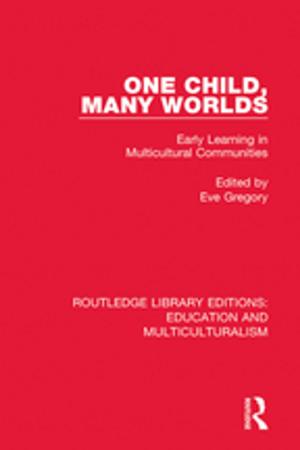Islamism and Cultural Expression in the Arab World
Nonfiction, Religion & Spirituality, Middle East Religions, Islam, Social & Cultural Studies, Social Science| Author: | ISBN: | 9781317537809 | |
| Publisher: | Taylor and Francis | Publication: | April 10, 2015 |
| Imprint: | Routledge | Language: | English |
| Author: | |
| ISBN: | 9781317537809 |
| Publisher: | Taylor and Francis |
| Publication: | April 10, 2015 |
| Imprint: | Routledge |
| Language: | English |
Whereas most studies of Islamism focus on politics and religious ideology, this book analyses the ways in which Islamism in the Arab world is defined, reflected, transmitted and contested in a variety of creative and other cultural forms. It covers a range of contexts of production and reception, from the early twentieth century to the present, and with reference to cultural production in and/or about Morocco, Algeria, Tunisia, Egypt, Yemen, the Gulf, Lebanon and Israel/Palestine. The material engaged with is produced in Arabic, English and French and includes fiction, autobiography, feature films, television series, television reportage, the press, rap music and video games. Throughout, the book highlights the multiple forms and contested interpretations of Islamism in the Arab world, exploring trends and tensions in the ways Islamism is represented to (primarily) Arab audiences and complicating simplistic perspectives on this phenomenon. The book considers repeated and idiosyncratic themes, modes of characterisation, motifs, structures of feeling and forms of engagement, in the context of an ongoing struggle for symbolic power in the region.
Whereas most studies of Islamism focus on politics and religious ideology, this book analyses the ways in which Islamism in the Arab world is defined, reflected, transmitted and contested in a variety of creative and other cultural forms. It covers a range of contexts of production and reception, from the early twentieth century to the present, and with reference to cultural production in and/or about Morocco, Algeria, Tunisia, Egypt, Yemen, the Gulf, Lebanon and Israel/Palestine. The material engaged with is produced in Arabic, English and French and includes fiction, autobiography, feature films, television series, television reportage, the press, rap music and video games. Throughout, the book highlights the multiple forms and contested interpretations of Islamism in the Arab world, exploring trends and tensions in the ways Islamism is represented to (primarily) Arab audiences and complicating simplistic perspectives on this phenomenon. The book considers repeated and idiosyncratic themes, modes of characterisation, motifs, structures of feeling and forms of engagement, in the context of an ongoing struggle for symbolic power in the region.















